Pooja Sagar
During my initial days as a librarian at an alternative school at Bangalore, I observed that children weren’t excited either about reading or seeking out the library to indulge in the joy of reading. They also seemed to lack a connection with the library as a space with books.
I realized that to nurture reading skills in children and facilitate their bonding with books I would need to augment my skills and of course, bring in innovation at the library. Around this time I was introduced to the Library Educator’s Course (LEC) offered by Bookworm, Goa. I joined the course eager to learn to set up a vibrant, congenial and inclusive library space. LEC opened up a whole new world for me in the field of library education.
Questions
As part of LEC, I undertook a Field Project (FP) where I sought answers to a few questions. Questions that I faced:
• How do I get the children to connect with books?
• How do I help children connect what they are reading to their own life experiences and to see themselves in stories they read (text-to-self connections);as also to appreciate the myriad lifestyles and life experiences around them (text- to-world connections)?
• Which of the library practices do I experiment with, in course of the FP such that I get to strengthen my bond with children and in turn help them connect with books and the library?
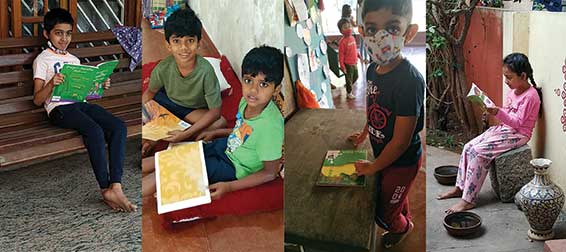
Space and group
The school was shut on account of COVID and so I chose to conduct the FP in a garage space close to my residence. Eight children from the school, aged between eight and to ten years, signed up for the project. None of these children were either avid readers or hugely passionate about books.
Plan
I decided to introduce books that were relevant to the children’s lives and check if this activity sparked interest in the story; help them make connections with their life experiences and therefore, make them look forward to reading more such books. I imagined that these books would act as mirrors where children would see themselves in stories, thus enabling text-to-self connection. I chose stories of events I assumed were the everyday lives of children in urban spaces. Some titles were Just like papa by Nandita da Cunha (Tota books, 2020), The invisible boy by Trudy Ludwig (Random House Children’s books, 2013) and Koala Lou by Mem Fox (Voyager books, 1991).
I wanted to explore whether having conversations around a book would present a sense of inclusivity and acceptance of one another’s opinions; of another person’s life and experiences and to the events happening in the community or the world around them. Such books would thereby act as windows and give children glimpses of the world around them. I chose stories that would introduce children to worlds they may not directly experience such as Sabri’s colours by Rinchin (Tulika Books, 2012), The why-why girl by Mahasweta Devi (Tulika Books, 2012) and Kali and The Rat Snake by Zai Whitaker (Tulika Books, 2006).
I also wanted to observe if the ‘read-aloud’ practice, of which I learnt during the LEC, would help answer my questions.
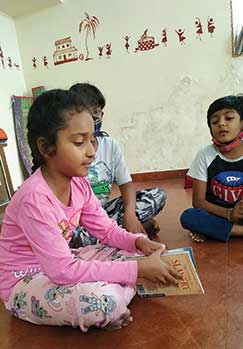
Reflections and learning
Flexibility
Making plans for each of the sessions helped me facilitate the sessions in a structured fashion. Taking notes post the session enabled me to plan the future sessions better. Yet, by the third week into my FP, I was feeling stressed. My lesson plans were tightly packed and I felt the pressure of accomplishing the tasks planned. This meant that, I could not go with the flow and allow for lively banter among children, which I also desired. I always felt pressurised to accomplish all the tasks that I had planned.
I then reflected on the need for some buffer time to allow for free-flowing activities and spontaneous conversations during the sessions. I learnt that it is good to have an agenda, but being flexible is the key. It is essential to be responsive and intuitive while working with children and accommodate changes based on the needs of the children.
I noticed that children may have shorter attention spans and hence lengthy activities led to distractions. So, I reduced lengthy activities into short periods of smaller varied activities. I learnt that children respond and participate better when there are different activities of shorter durations.
Interactions and activities
Along with the read-aloud sessions, I planned some interactive sessions and activities. These made the learning-process more collaborative!
Book talks – Allotting a dedicated time to have conversations about books had powerful effects. When children shared what they had been reading, their friends got interested and picked those books. They also started making book recommendations to each other.
Right from day one, Ridhi had been completely involved with The Story of Slavery by Sarah Courtauld (Usborne young reading, 2010). She discussed the unfairness of slavery multiple times and also told talked about the characters and incidents in the book with other children. After her book talk, the book was in high demand among the children. I learnt that book talks not only helped children talk about their personal connections with the book, but also generated curiosity among the listeners. The curiosity led to more children borrowing the book under discussion.
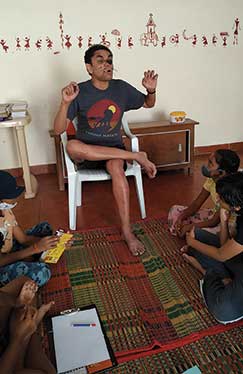
Character alive – One of my colleagues dressed like a lion and a lizard for the ‘character alive’ acts. Children picked up the story books immediately after they saw his acts. I learnt that activities such as ‘character alive’ are powerful to ignite curiosity for reading! I also reflected that the participation and collaboration with other adults at school builds a community that nurtures reading.
Prompts – During read-aloud sessions, I noticed that children weren’t sharing their feelings or thoughts while I read. In order to get them to share eagerly, I started using question prompts such as – ‘What is happening in this picture’? ‘How do you think he/she is feeling’? ‘Has it happened to you too’? ‘Have you ever felt like this’? etc.
As the weeks passed I noticed that a few children started sharing their personal experiences even before I prompted; while a few shared upon prompting. I learnt that prompting aids in nurturing personal connections with books. Children also took turns to read-aloud, which made me reflect that children are enjoying the process of reading out loud.
Library games – Along with read – aloud sessions, I chose activities such as treasure hunt, quiet reading time, snowman and pictionary. These games helped children develop a sense of camaraderie with me and helped break the monotony of just reading-out loud every session.
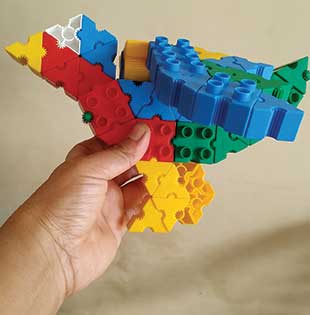
As days passed, children started displaying deeper bonds of friendship with me. They made personalized cards and built Lego models for me. They hugged me more often too.
I reflected that the librarian is the heart of the library and that a librarian’s positivity and drive to lead a robust library program, aids children to connect deeply with books and library.
Issue of books & library cards
Library activities and interactions in turn accelerated the issue of books. I noticed that children were borrowing almost all the books that were represented in activities or spoken about in book talks.
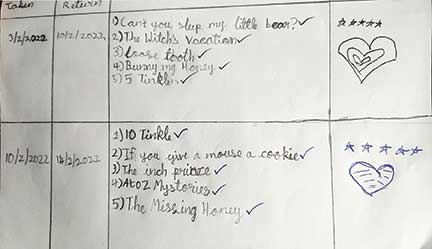
When I browsed their library cards, I noticed that Pushpa was borrowing five to six books each week, as compared to Sumith who would borrow one or two books. I realized that the former didn’t have access to books anywhere else; while the latter had access to personal book collections at home.
I reflected that not all readers can be compared to each other and one has to think of each reader as an individual in the library. These reflections guided me to start a small community library.
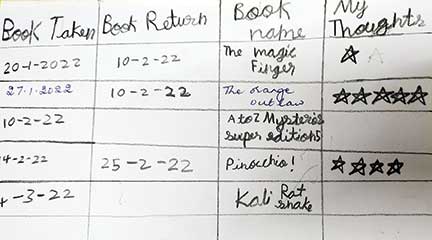
People
People play a vital role in the library space. Guidance and support of mentors from Bookworm, Goa throughout the FP, was hugely beneficial. Our school principal supported my project by organizing school transport to pick and drop the children to my activity centre. The parents supported my cause by sending children despite risk of COVID spread. I learnt that a library engagement requires immense cooperation and support from members of the extended community.
Inclusion
During the FP period, two children from the neighbourhood, walked in. Encouraged by the excitement they saw and heard, they were keen to join the rest of the children. We gladly welcomed the newcomers. The older children introduced them to the book collection and the library cards. Slowly, the new children got fully involved in the activities. Two more girls from our school also joined as volunteers. By the end of the FP, there were twelve children in all! This taught me that an inclusive library can be an attractive place for young minds!
Conclusions
The practice of ‘reading aloud’ helped me bond with children over books. Along with reading aloud, the acts of questioning, drawing attention to illustrations and prompting helped children make personal connections with books. Children volunteered to read-aloud too, which was a positive stroke in my discovery to nurture readers.
The children too have started bonding with me, the books, and the library. They talk about books when they see me at school even now, long after the project. They continue to share stories about matters we discussed during the project. They keep checking if the library has ordered new books. Children are keen to do book-talks and make book-recommendations, which are indicators that they are turning into happy readers.
Constant reflections are very vital for a librarian in order to have a deeper and richer engagement with a library practice. Being flexible and attentive to the constantly changing needs of children is essential in order to keep the program, vibrant and dynamic. A strong library vision coupled with the librarian’s work commitments are the essential driving forces for a successful library program. I look forward to all these in the years to come.
References
- Noronha, Sujata (2016) Nurturing readers by reading. Compendium of readings, 2021
- Reasons Why Reading Out Loud Is Actually Good For You, accessed on 5th March 2022 at https://www.literaturelust.com/post/4-reasons-why-reading-out-loud-is-actually-good-for-you
The author is works as a librarian and also teaches Environmental Management in Ohana school, Bangalore. She’s a professional storyteller and also runs a children’s library out of her home. She loves watching birds and is a lover of elephants. She can be contacted at poojasagar.2000@gmail.com.
